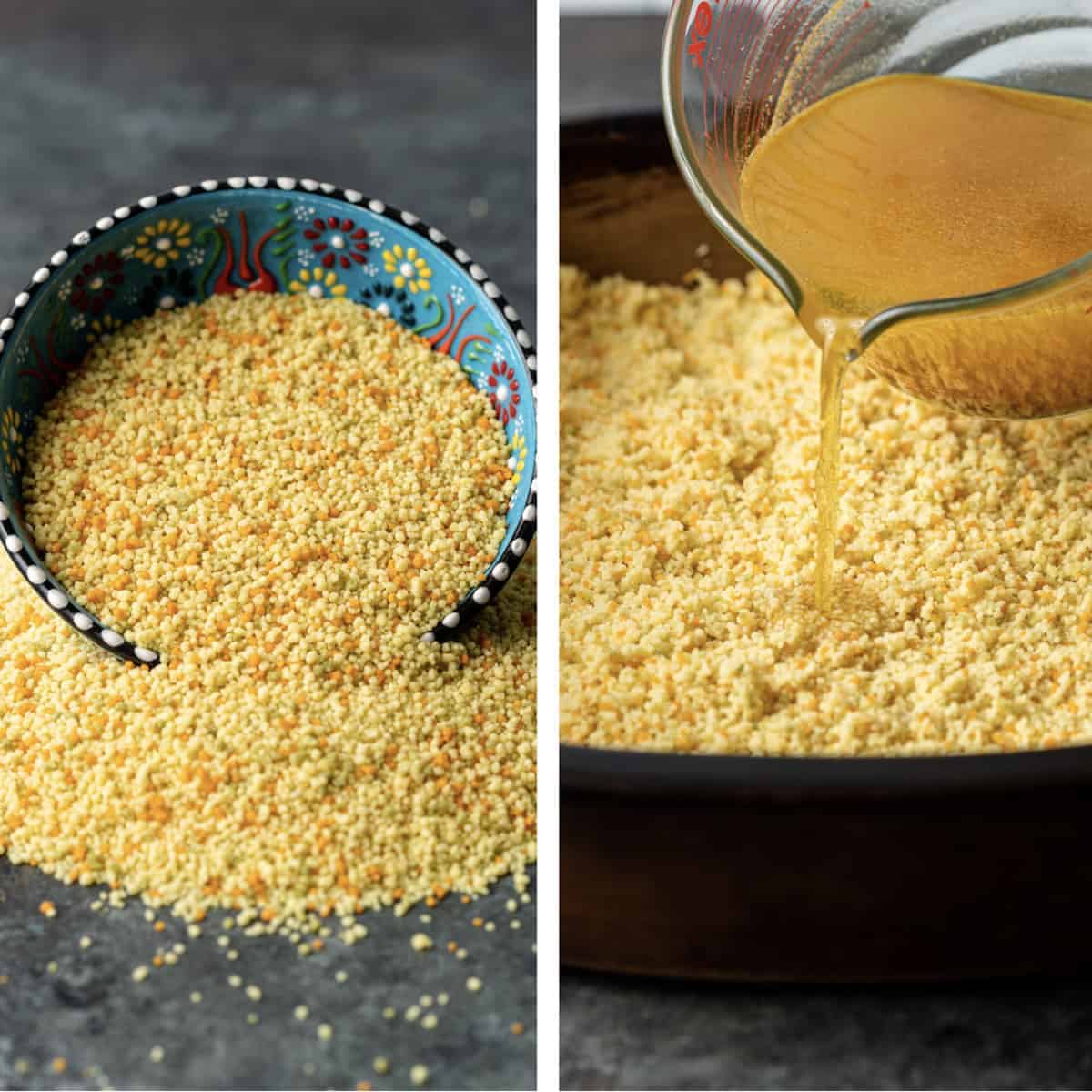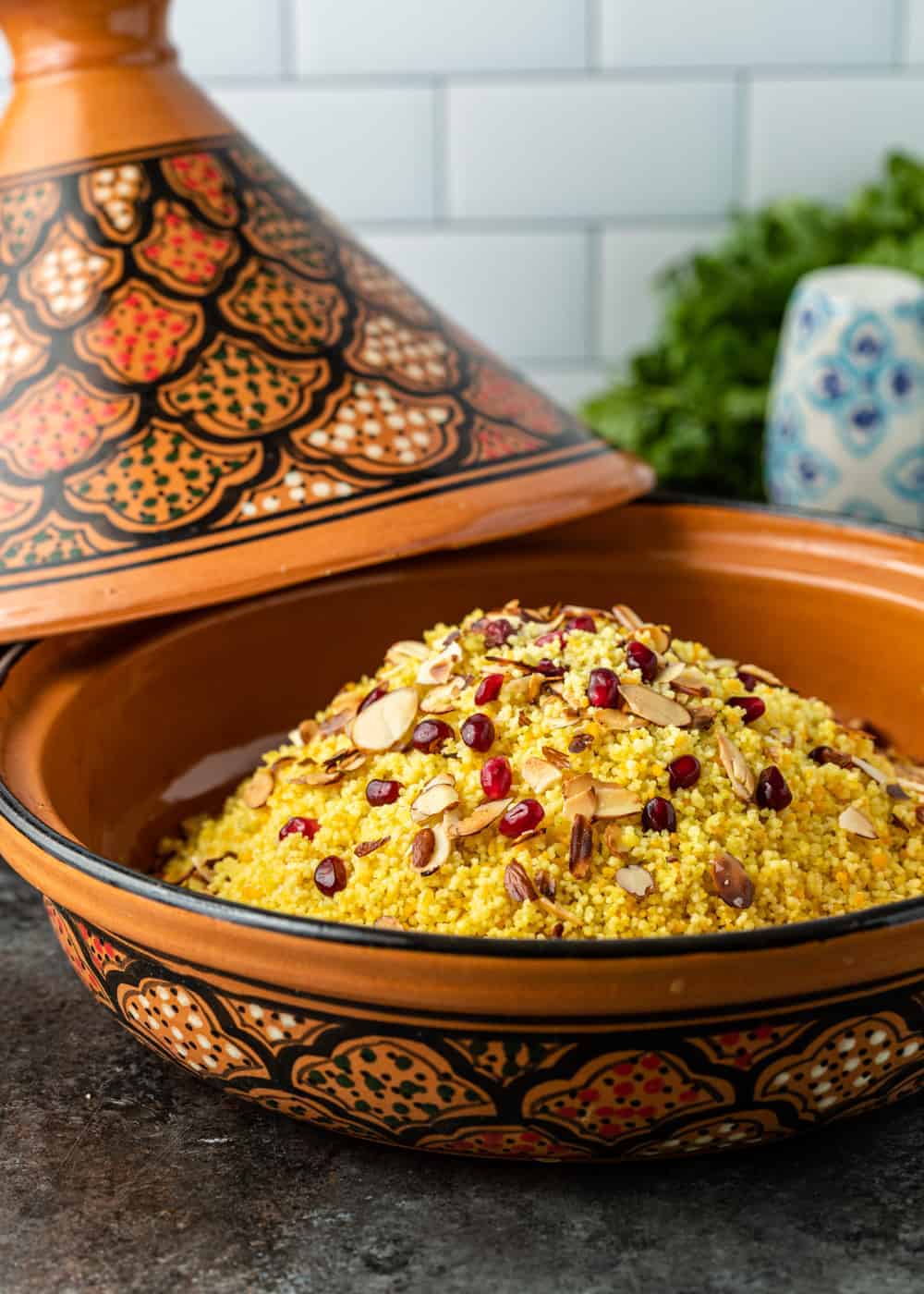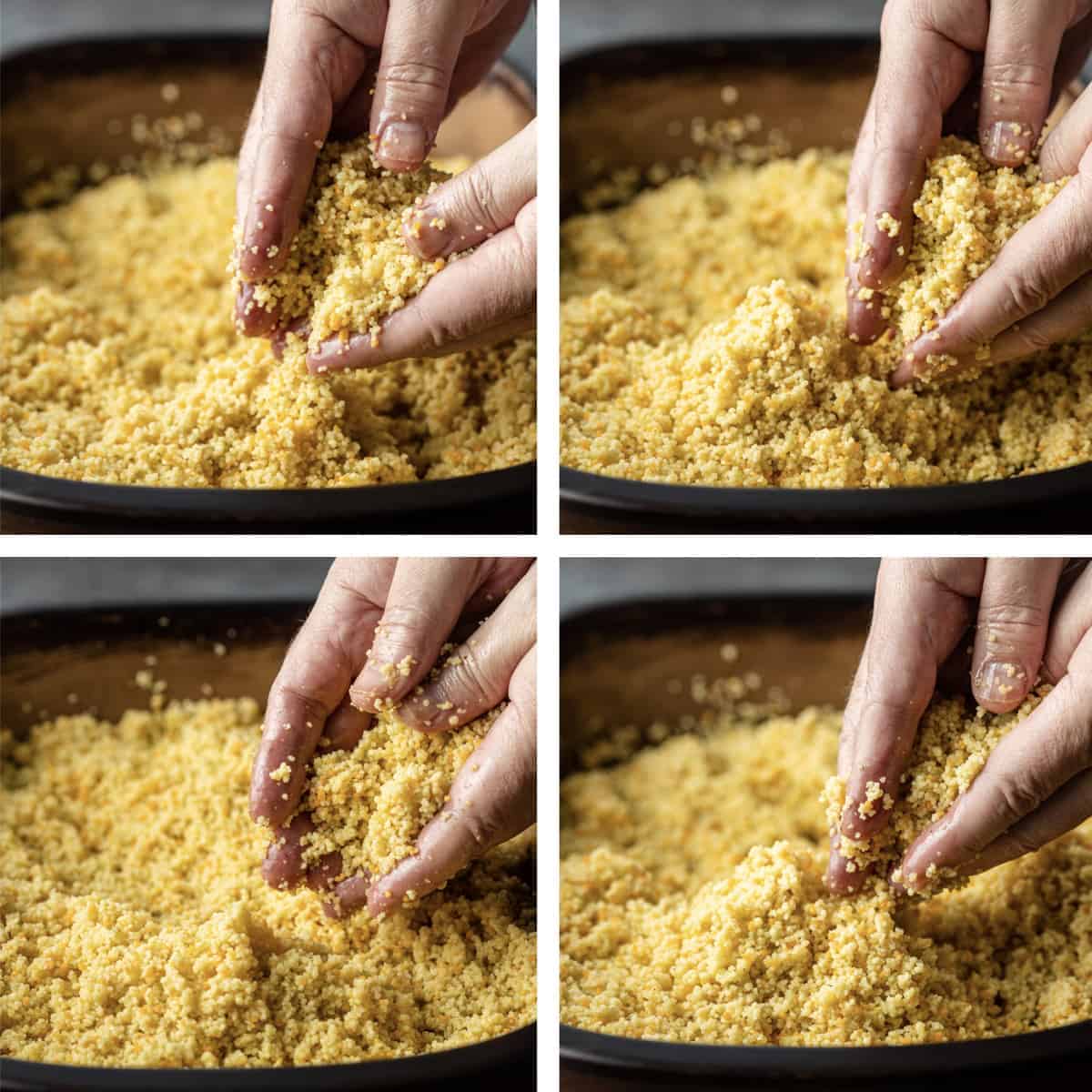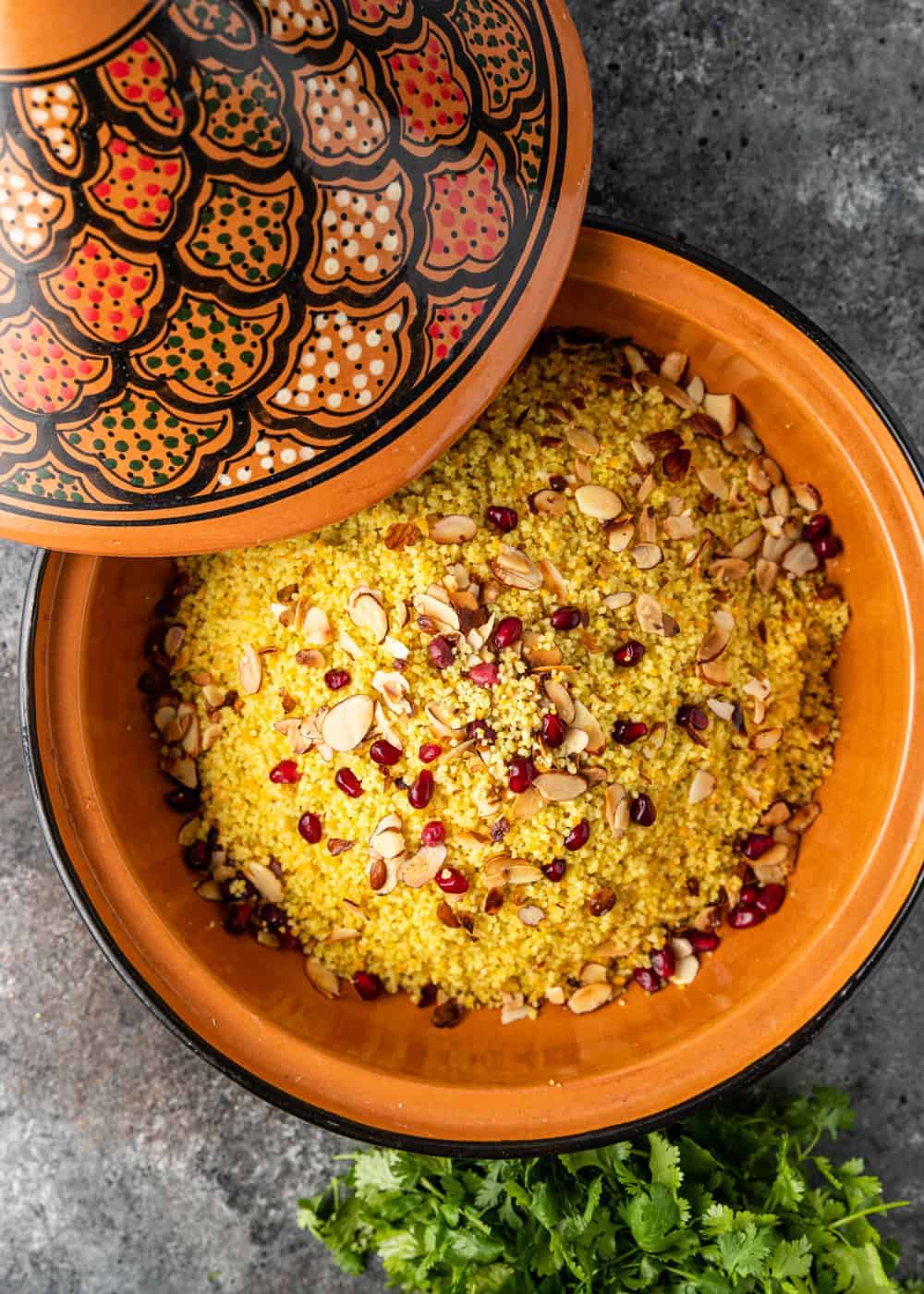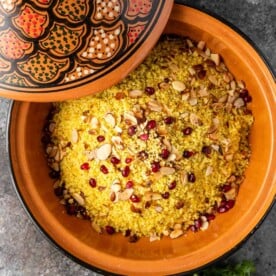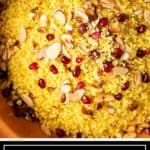published Jul 29, 2020, updated Dec 20, 2021 Couscous is a semolina cracked grain that resembles coarse cornmeal and is served alongside many different tagine dishes and roasted meats. It is also wonderful chilled and dressed with fresh, bright vegetables in a salad or with a squeeze of fresh lemon juice over the top. This particular Moroccan couscous recipe has a hint of curry plus some crunch from slivered almonds and pomegranate seeds. Serve alongside koobideh kebabs or my Lamb Tagine with Dates and Apricots, which is made with a variety of spices and aromatics. Or, try Ptitim for a different take on this ancient grain. It’s an Israeli salad that’s made with larger pearl couscous and served chilled.
Ingredients for Moroccan Couscous
Note: This is just a partial list of ingredients. For the full ingredient list, see the recipe card at the bottom of this post.
Couscous – There are several different kinds of couscous, so be sure to choose the pearled variety. It’s the smallest form of couscous and should be easy to find in any US supermarket.Slivered almonds – Instead of using them raw, toast the almonds to release the oils and enhance the overall flavor. Not only will they add crunch to the salad, but they’ll pair beautifully with the nutty flavor of the grain.Pomegranate seeds – These add extra color, texture, and flavor to this African couscous recipe. It’s best to use fresh arils, and you can find instructions on how to remove them in the recipe notes below.
Recipe Video
This is an easy side dish to make, and it comes together quickly too. To see the process from start to finish, be sure to watch the video in the recipe card at the bottom of this post!
Tips for Cooking Couscous
The key to cooking couscous is using seasoned water, never plain, to infuse the dish with flavor. Also, it’s important to remember that couscous needs to be steamed, not boiled. Boiling takes the life out of the grain, while steaming creates a perfectly moist and tender bite. Instructions
Moroccan Couscous Recipe notes
Leftovers – Store the couscous with pomegranate in an airtight container in the refrigerator for up to 3 days. Reheat on the stove or in the microwave, adding a splash of water or vegetable stock to rehydrate the grains as needed.Freezing – Allow the dish to cool completely, then transfer to an airtight container and freeze for up to 3 months. Thaw in the refrigerator overnight before reheating.Make it more filling – If you’d like, try mixing some roasted vegetables, chickpeas, or peppers into the cooked couscous for a complete vegetarian meal.Play with different flavors – Because this recipe is so simple, you could easily make it without the almonds and pomegranates or try different seasonings for the soak.
How to remove seeds from a pomegranate There are several different methods for removing those delicious, juicy arils, but this seems to be the most popular: Tip: If there are still some seeds stuck inside, break the fruit into smaller pieces and submerge them in the water. Then, use your fingers to release the remaining seeds.

